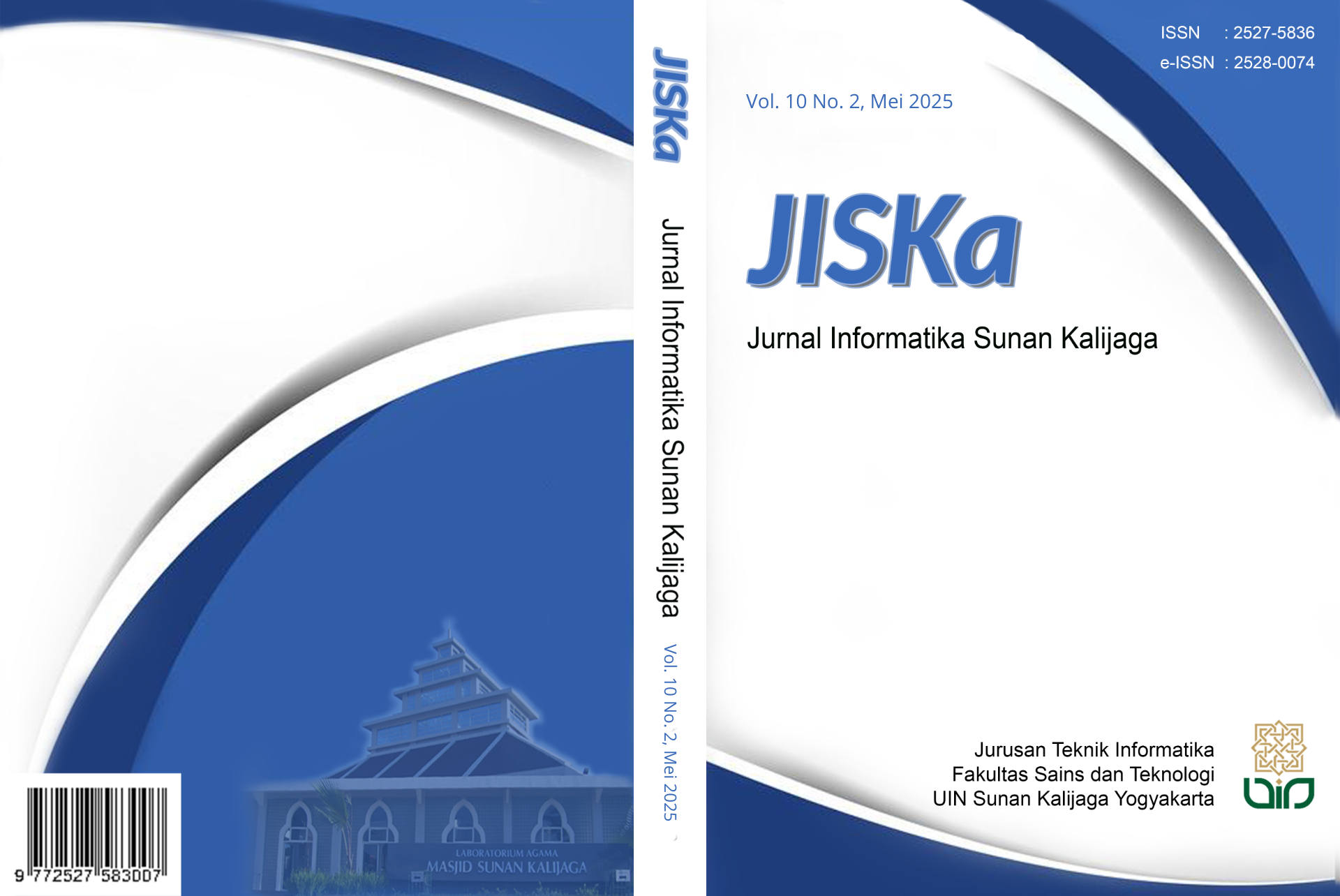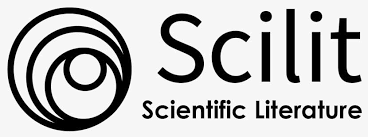Perbandingan Kinerja Naïve Bayes dan Random Forest dalam Mendeteksi Berita Palsu
DOI:
https://doi.org/10.14421/jiska.2025.10.2.137-144Keywords:
Random Forest, Naive Bayes Algorithm, Text Classification, Fake News Detection, Machine LearningAbstract
Fake news has become a serious problem in today's digital era. The existence of fake news can have various negative impacts, including the spread of misinformation, social unrest, and economic losses. This study compares the performance of Naïve Bayes and Random Forest classification methods in detecting fake news. Both methods were evaluated on a news dataset comprising 44,898 samples. It uses public data from the Kaggle repository. The news samples are represented by four features: title, news content, subject, and news date. This data is then subjected to cleaning, stemming, tokenization, and feature extraction. The results indicate that the Random Forest method outperforms the Naïve Bayes method. The Random Forest method has an accuracy of 99%, while the Naïve Bayes method has an accuracy of 96%. In general, this research demonstrates that the Random Forest method can be a viable alternative for detecting fake news.
References
Abdullah, S., & Prasetyo, G. (2020). Easy Ensemble with Random Forest to Handle Imbalanced Data in Classification. Journal of Fundamental Mathematics and Applications (JFMA), 3(1), 39–46. https://doi.org/10.14710/jfma.v3i1.7415
Anand, A., Kulkarni, R., & Agrawal, P. (2023). Fake News Identification: An Effective Combined Approach using ML and DL Techniques. 2023 2nd International Conference on Paradigm Shifts in Communications Embedded Systems, Machine Learning and Signal Processing (PCEMS), 1–6. https://doi.org/10.1109/PCEMS58491.2023.10136087
Ariatmanto, D., & Rifai, A. M. (2024). The Impact of Feature Extraction in Random Forest Classifier for Fake News Detection. Jurnal RESTI (Rekayasa Sistem dan Teknologi Informasi), 8(6), 730–736. https://doi.org/10.29207/resti.v8i6.6017
Arora, Y., & Sikka, S. (2023). Reviewing Fake News Classification Algorithms. In pp (pp. 425–429). https://doi.org/10.1007/978-981-19-2065-3_46
Breiman, L. (2001). Random Forests. In Machine Learning (Vol. 45, Issue 1, pp. 5–32). Springer. https://doi.org/10.1023/A:1010933404324/METRICS
Hanum, A. R., Zetha, I. A., Putri, S. C., Wulandari, R. A., Andina, S. P., Fajrina, J. N., & Yudistira, N. (2024). Analisis Kinerja Algoritma Klasifikasi Teks Bert dalam Mendeteksi Berita Hoaks. Jurnal Teknologi Informasi dan Ilmu Komputer, 11(3), 537–546. https://doi.org/10.25126/jtiik.938093
Lazuardi, M. F., Hiunarto, R., Ramadhani, K. F., Noviandi, N., Widayanti, R., & Arfian, M. H. (2023). Hoax News Detection Using Passive Aggressive Classifier and TfidfVectorizer. Jurnal Teknik Informatika, 16(2), 185–193. https://doi.org/10.15408/jti.v16i2.34084
Nath, K., Soni, P., Anjum, Ahuja, A., & Katarya, R. (2021). Study of Fake News Detection Using Machine Learning and Deep Learning Classification Methods. 2021 International Conference on Recent Trends on Electronics, Information, Communication & Technology (RTEICT), 434–438. https://doi.org/10.1109/RTEICT52294.2021.9573583
Praha, T. C., Widodo, W., & Nugraheni, M. (2024). Indonesian Fake News Classification Using Transfer Learning in CNN and LSTM. JOIV : International Journal on Informatics Visualization, 8(3), 1213. https://doi.org/10.62527/joiv.8.2.2126
Qubra, R., & Saputra, R. A. (2024). Classification of Hoax News Using the Naïve Bayes Method. International Journal Software Engineering and Computer Science (IJSECS), 4(1), 40–48. https://doi.org/10.35870/ijsecs.v4i1.2068
Rai, A., & Borah, S. (2021). Study of Various Methods for Tokenization. In pp (pp. 193–200). https://doi.org/10.1007/978-981-15-6198-6_18
Rianto, R., Mutiara, A. B., Wibowo, E. P., & Santosa, P. I. (2021). Improving the Accuracy of Text Classification Using Stemming Method: A Case of Non-Formal Indonesian Conversation. Journal of Big Data, 8(1), 26. https://doi.org/10.1186/s40537-021-00413-1
Santoso, H. A., Rachmawanto, E. H., Nugraha, A., Nugroho, A. A., Rosal Ignatius Moses Setiadi, D., & Basuki, R. S. (2020). Hoax Classification and Sentiment Analysis of Indonesian News Using Naive Bayes Optimization. TELKOMNIKA (Telecommunication Computing Electronics and Control), 18(2), 799. https://doi.org/10.12928/telkomnika.v18i2.14744
Sarica, S., & Luo, J. (2021). Stopwords in Technical Language Processing. PLOS ONE, 16(8), e0254937. https://doi.org/10.1371/journal.pone.0254937
Solanki, A., & Saxena, R. (2020). Text Classification Using Self-Structure Extended Multinomial Naive Bayes. In pp (pp. 107–129). https://doi.org/10.4018/978-1-5225-9643-1.ch006
Song, X., Salcianu, A., Song, Y., Dopson, D., & Zhou, D. (2021). Fast WordPiece Tokenization.
Yerlekar, A., Mungale, N., & Wazalwar, S. (2021). A Multinomial Technique for Detecting Fake News Using the Naive Bayes Classifier. 2021 International Conference on Computational Intelligence and Computing Applications (ICCICA), 1–5. https://doi.org/10.1109/ICCICA52458.2021.9697244
Zollanvari, A. (2023). Supervised Learning in Practice: The First Application Using Scikit-Learn. In Machine Learning with Python (pp. 111–131). Springer International Publishing. https://doi.org/10.1007/978-3-031-33342-2_4
Downloads
Published
How to Cite
Issue
Section
License
Copyright (c) 2025 William William, Teny Handhayani

This work is licensed under a Creative Commons Attribution-NonCommercial 4.0 International License.
Authors who publish with this journal agree to the following terms as stated in http://creativecommons.org/licenses/by-nc/4.0
a. Authors retain copyright and grant the journal right of first publication with the work simultaneously licensed under a Creative Commons Attribution License that allows others to share the work with an acknowledgement of the work's authorship and initial publication in this journal.
b. Authors are able to enter into separate, additional contractual arrangements for the non-exclusive distribution of the journal's published version of the work (e.g., post it to an institutional repository or publish it in a book), with an acknowledgement of its initial publication in this journal.
c. Authors are permitted and encouraged to post their work online (e.g., in institutional repositories or on their website) prior to and during the submission process, as it can lead to productive exchanges, as well as earlier and greater citation of published work.










